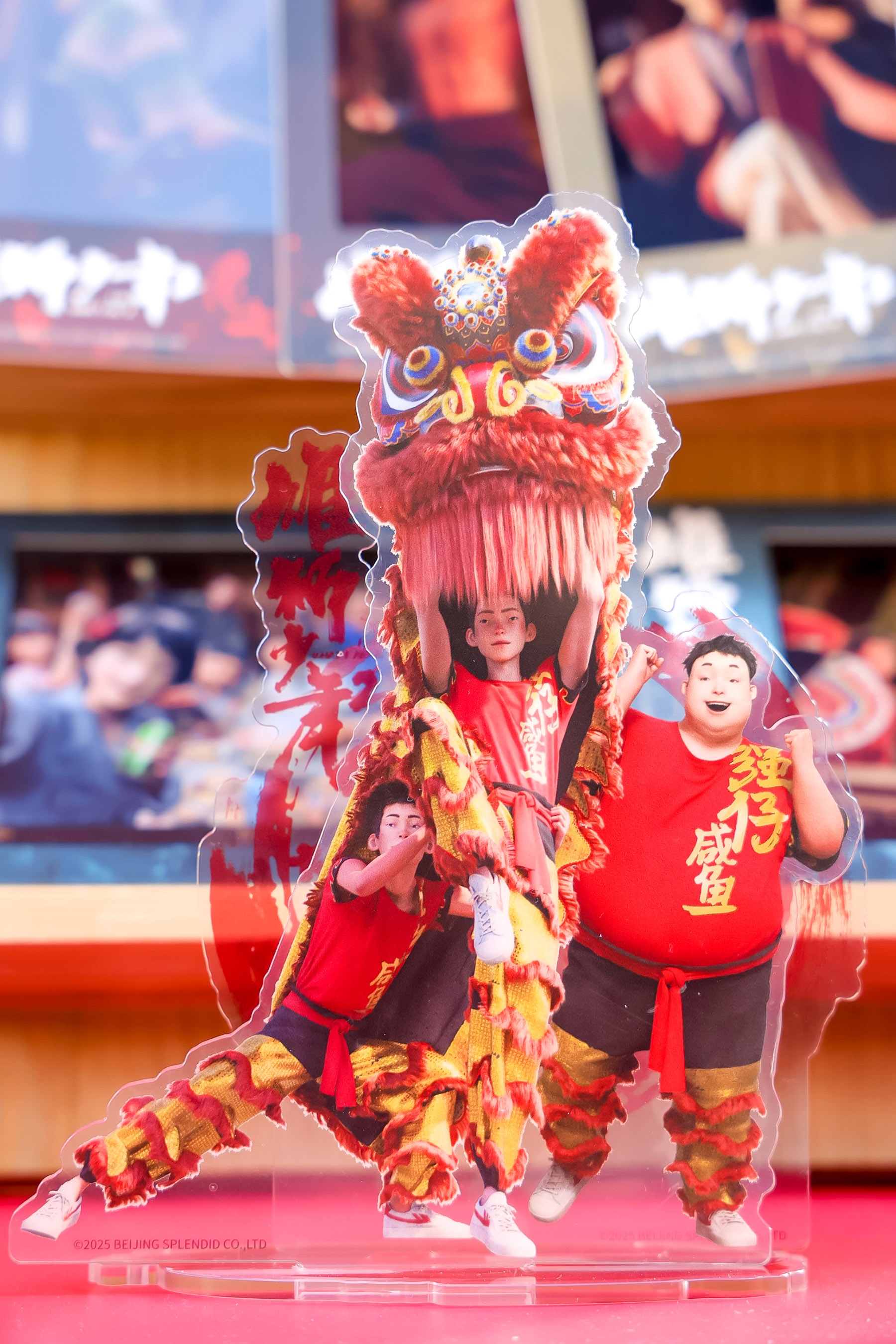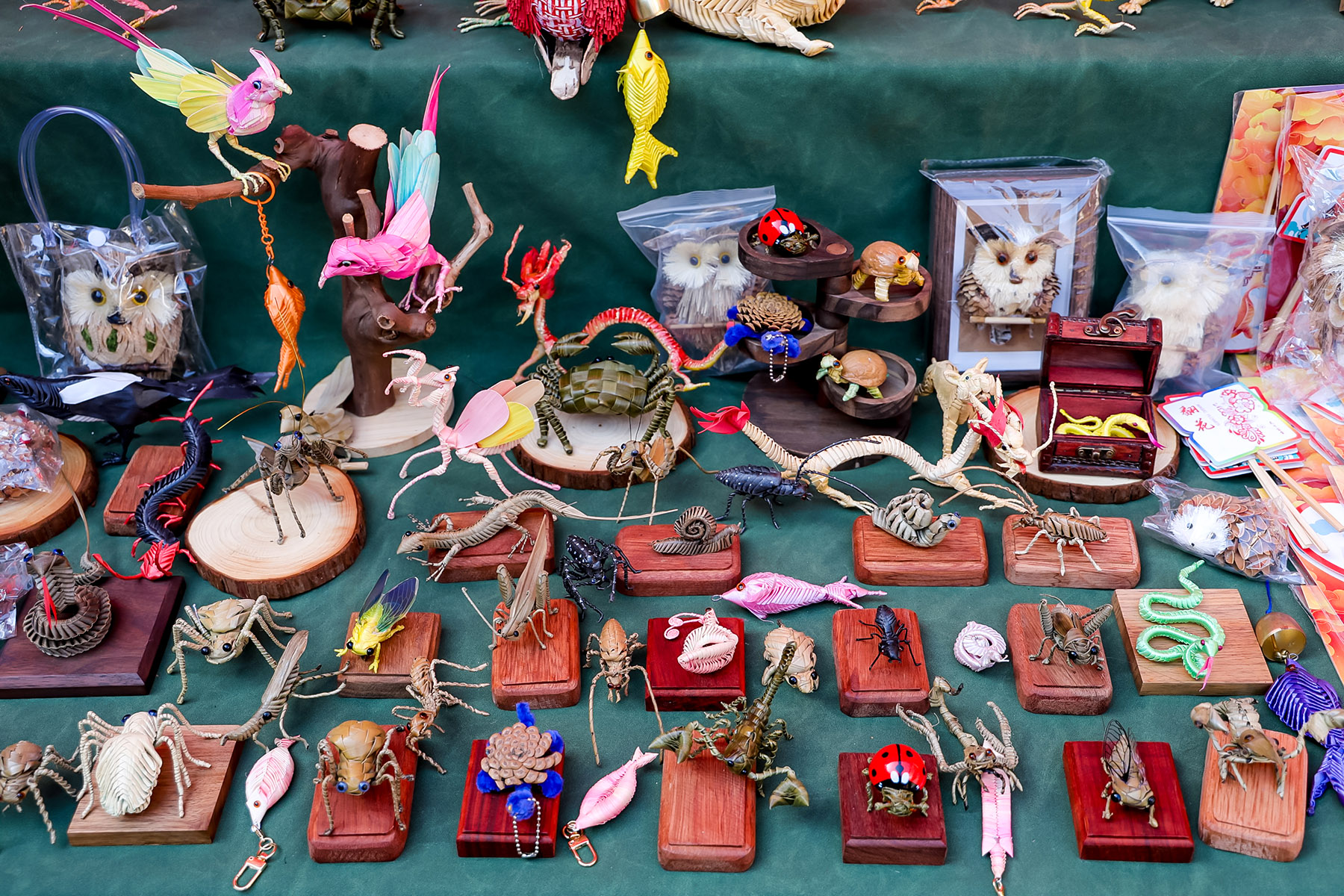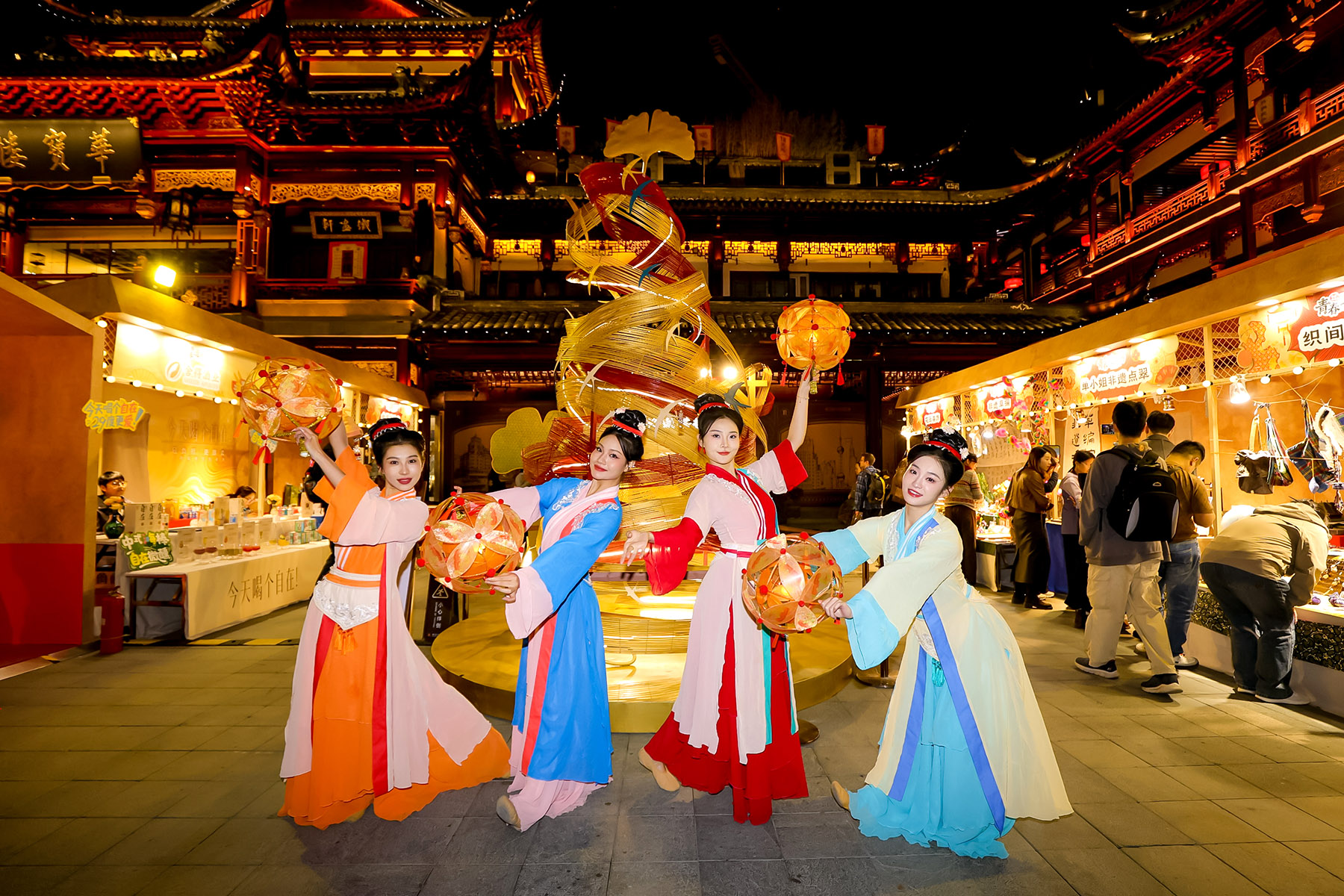The famed Yuyuan hosts a month-long festival featuring diverse traditional Chinese crafts, immersing visitors in a multitude of activities, Wang Xin reports.

Standing at the center of Yuyuan Garden's Central Plaza in Shanghai is an eye-catching installation made of woven bamboo, an intangible cultural heritage from Daoming town in Chengdu, Sichuan province.
Kicking off on Nov 14 and running through Dec 14, a festival is gathering hundreds of China's intangible cultural heritage crafts and over 20 time-honored brands around Yuyuan Garden and its mall area.
Over the month-long celebration, inheritors of diverse intangible cultural heritages offer innovative, immersive, interactive, and international demonstrations of traditional Chinese culture for domestic and overseas visitors.
READ MORE: Festival lights the way for the Year of the Snake
Xiao Yao, the 31-year-old inheritor of the Daoming bamboo-weaving craft, leads the design and setup of the impressive installation. Decorated with golden ginkgo leaves, the woven bamboo is painted in gold and red, flowing over the roofs of historical buildings across Yuyuan.
Boasting a profound history of over 2,000 years, Daoming bamboo-weaving was listed as a national intangible cultural heritage in 2014. The residents in Daoming town began planting bamboo and making household utensils out of it since the Qin Dynasty (221-206 BC), according to Xiao.


However, Xiao notes, there was a time when fewer people were passing on the craft due to economic reasons. Despite assisting her parents in bamboo-weaving since childhood, she also felt a bit reluctant to inherit the craft. She chose another career path to become a nurse until 2019.
"It was more about the responsibility when I returned to my hometown and started inheriting the craft, as you sometimes get bored with things you've been doing since childhood. Later, more young people like me added our ideas and innovations to the old craft. As it grows, it leads us to our passion and a new career," says Xiao.
Xiao explains that, taking the main installation at Yuyuan as an example, integrating the traditional bamboo-weaving craft with modern techniques makes it more exciting. Underneath the soft but pliable bamboo strips, a steel structure was placed inside the base to keep its form consistent all the way to the top, presenting an artistic expression of a "thriving bloom".
The environmentally friendly craft is now also widely used to make brooches, ornaments, frames, window designs, and mall decorations, which has greatly improved Daoming's local economy and the residents' livelihoods.


The rising popularity of Chinese intangible cultural heritage also extends beyond the nation. Xiao shares that, as the inheritor of the craft, she and her works have traveled to many other countries, such as France and Saudi Arabia, sharing Chinese traditional craftsmanship and culture with a wider audience.
"We are extremely proud to share Daoming bamboo-weaving with others. Our studio receives about 10,000 visits per year, including students from primary schools to universities, as well as seniors. We will continue innovating and hope more people will join us," says Xiao.
In addition to the delicate bamboo-woven installation, other intangible cultural heritages from China are attracting global visitors in diverse forms.
Besides the main installation, a Prismland Cafe pop-up store selling products featuring the hit animated film I Am What I Am and its sequel drew crowds, with stories depicting young boys involved in lion dance and wushu (martial arts), both of which are popular intangible cultural heritages in China.
"We saw many children, parents and foreign visitors stop by our booth to check out the products. Personally, I'm really into wushu, and even learned a bit about Wing Chun at university. My friends are also mostly interested in traditional culture," says Li Min, a 27-year-old manager of the cafe.

Anne Zeihen, a 30-year-old travel agent from Luxembourg, was wearing traditional Chinese clothing and make-up when she spoke with China Daily. Benefiting from China's visa-free policy, she was enjoying her first trip to the nation and was in Yuyuan for a photoshoot with a local photographer after spending several days in Beijing.
Despite a language barrier, she and the photographer managed to understand each other through body language and simple English words.
"This is my first time wearing traditional Chinese clothes. They are very light and comfortable, and easy to move around in. It is a very fun experience and worth trying," Zeihen says excitedly.
ALSO READ: A brilliant celebration
She was also impressed by the traditional crafts and old architecture, where she also spotted modern elements, adding that she would share her Yuyuan photos on her social media platforms.
In the next few weeks, a variety of shows are scheduled across Yuyuan, including folk dances, music, tea culture, purple clay teapot-making, and workshops that blend animation and games.
On the weekends, visitors are welcome to various handcrafting workshops to learn more about China's intangible cultural heritage.
Contact the writer at wangxin2@chinadaily.com.cn


